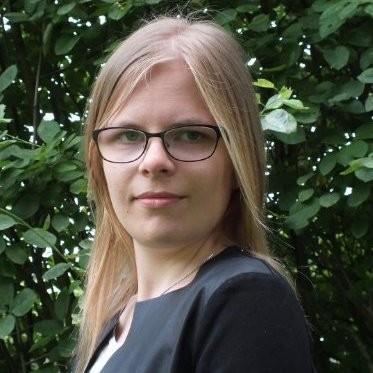PhD student secondment at Bradford's National Science and Media Museum
PhD student Ellen De Korte takes on a secondment with Bradford’s National Science and Media Museum as part of the University’s DyViTo project.
Ellen’s secondment at the National Science and Media Museum marks an important milestone in the international multi-partner DyViTo research project.
The Dynamics of Vision and Touch (DyViTo) project, led by Professor Marina Bloj at the University of Bradford, explores how real-world tasks such as drinking tea or operating machines require us to integrate information across time and the senses. Understanding how we perform dynamic, multisensory integration is a key challenge with important applications in digital and virtual environments to create virtual objects that look, feel, move and change like ‘the real thing’.

Ellen De Korte
DyViTo brings together researchers and innovators from nine different Universities, two Museums and four companies across Europe. PhD students like Ellen are engaging in pioneering multidisciplinary studies under the supervision of experts in visual and haptic perception, neuroimaging, modelling, material rendering and lighting design.
For this part of the DyViTo project, early career researchers were given a behind the scenes tour and in-depth training in communication and audience engagement. These communication skills are an essential part of the students ability to develop tools and measure impact in their scientific careers and in support of the DyViTo project.
The National Science and Media Museum has a long-standing strong relationship with the University of Bradford across a number of areas, so it seemed appropriate that the first PhD student to undertake their secondment to the Museum should be from Bradford.
The purpose of the secondment is to test objects on the public that Ellen has collected from charity shops. She is gathering data on how people view material degradation in common, household items like clothes, toys and cutlery compared to museum pieces. This study will inform DyViTo's understanding of materials perception of objects. Ellen said:
“I found that it is one thing to learn to do science and an entirely different thing to communicate about it. Explainers in the Museum seem to do it with ease. However, when I tried to do it myself, I found that it is a lot harder than it looks. For example, you have to learn how to get people interested in what you are doing. Moreover, you need to constantly switch gears, because you encounter people from different backgrounds. Nevertheless, if you manage to draw people in and interact with them, it is a rewarding experience. People are willing to listen and take a little piece of information with them.”
Over the next two years, other early career researchers will be offered a secondment to the Museum as part of the DyViTo project. The information gathered from all these experiences will be collated and used to inform the next stages of the project.
